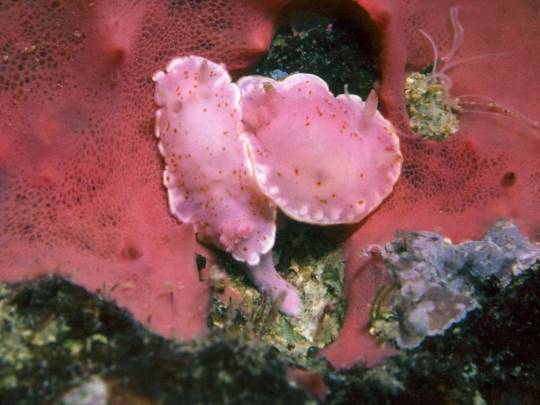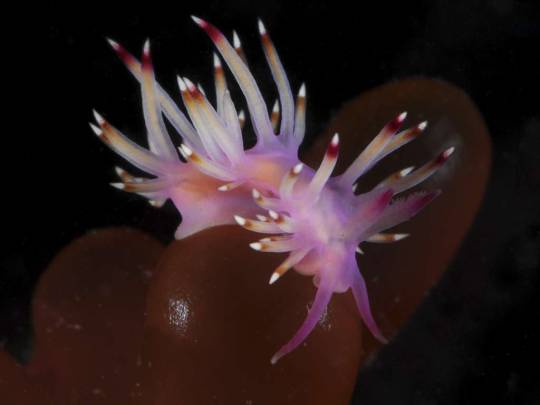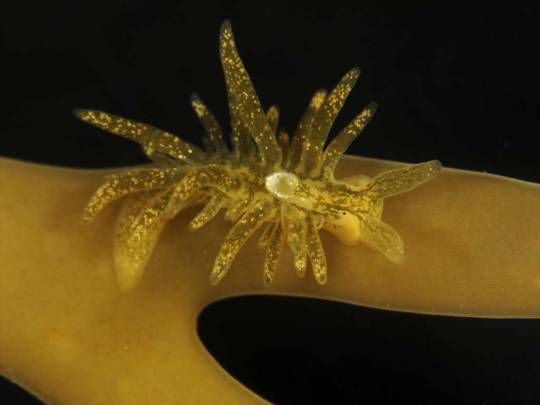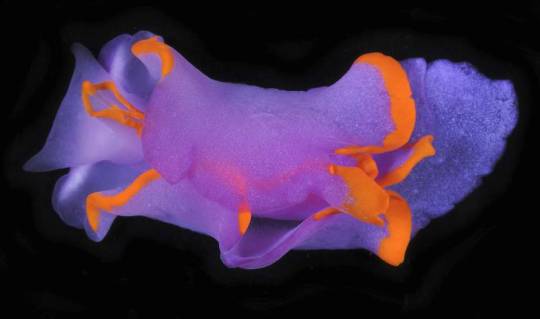#noumea haliclona
Explore tagged Tumblr posts
Photo





Nudibranchs, tiny "butterflies of the sea"
1) Noumea haliclona 2) Trinchesia sororum 3) Flabellina sp. #4 4) Placida sp. #1 5) Sagaminopteron ornatum
#nudibranch#nudibranchs#nudibranchia#gastropod mollusc#gastropod molluscs#animal#animals#water#underwater#marine#ocean#sea#aquatic#noumea haliclona#trinchesia sororum#flabellina sp. 4#placida sp. 1#sagaminopteron ornatum#museumvictoria#australia#nature
2 notes
·
View notes
Photo


Nudibranch: Goniobranchus splendidus
G. splendidus grows up to 4 cm and is found across the east coast of Australia. A recent study which looked at how fish recognise toxic prey found that fish predators learn to avoid the yellow rim (which is a consistent colour feature) and pay little attention to the red spots (which are variable).

Figure 1: Variations in the red spot pattern of Goniobranchus splendidus (A-D), and similar species Noumea haliclona (E) and Chromodoris hunteri (F). Figure from Rudman, 1983.
References:
Rudman, W.B., 1983. The Chromodorididae (Opisthobranchia: Mollusca) of the Indo-West Pacific: Chromodoris splendida, C. aspersa and Hypselodoris placida colour groups. Zoological Journal of the Linnean Society, 78(2), pp.105-173.
Winters, A.E., Green, N.F., Wilson, N.G., How, M.J., Garson, M.J., Marshall, N.J. and Cheney, K.L., 2017. Stabilizing selection on individual pattern elements of aposematic signals. Proc. R. Soc. B, 284(1861), p.20170926.
Photos:
1) Photo taken by Loren Mariani for the Gold Coast Sea Slug Census.
2) Photo by Anne Winters
#educational#nudibranch#marine life#marine biology#biology#marine#science#marine science#stem#Goniobranchus splendidus#toxic#toxic animal#toxic animals#underwater photography#underwater#underwater pics#wildlife photography#wildlife pics#wildlife#australia#gastropod#gastropoda#mollusc#molluscs#sea slug#sea slugs#slug#slugs
41 notes
·
View notes